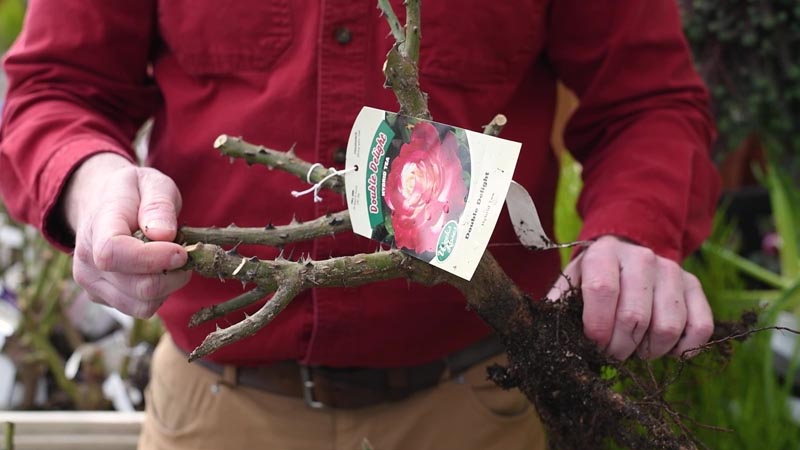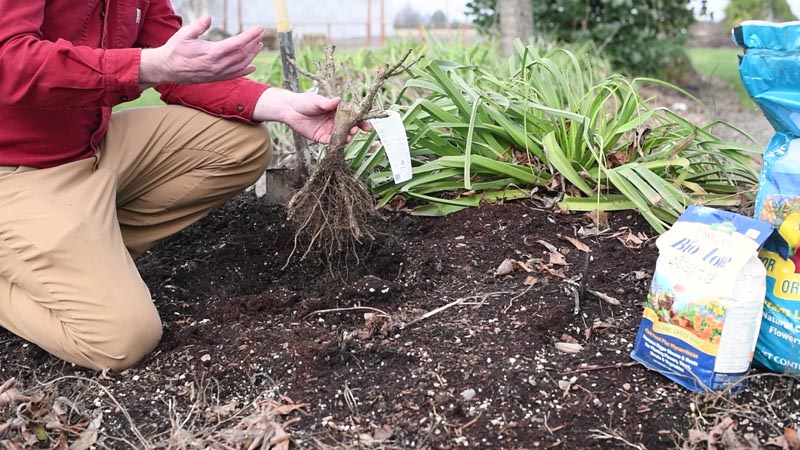
One of Brian’s favorite times of year is when our bare root roses arrive because it means spring is right around the corner. Bare root roses are one of those first plants that we can get started for the coming year. But the first step in finding the right bare root rose for you is picking out the right rose.
Types of Bare Root Roses
First and foremost, climbing roses. Pretty self-explanatory. Roses that are going to climb.
The second type of rose is a hybrid tea rose. These types of roses are the ones with nice long stems that work great for cutting. The bloom time is typically a little bit shorter with them; they just don’t have as many blooms, but you’re going to get those perfect long-stemmed roses for cutting using in vases.
The next type is a grandiflora, which is kind of a step down from the hybrid tea in that it won’t have just single long roses. It’s going to have more of a cluster of roses on the end of the stems, but they still work great for cutting. There’s going to be more of them than you’ll have in the hybrid tea, and their bloom time is a little bit longer.
Last is a floribunda. Floribundas are going to have tons of flowers in the top. They don’t work as great for cutting because they’re not as long-stemmed, and there are multiple roses on the end of each stem, but they last a lot longer. The bloom time is gonna cover a much longer period of time, so it really depends on what’s going to work best for you and your garden in terms of the type of rose that you’d like to pick.
One of Brian’s favorite roses is Double Delight. It’s this beautiful red rose with a kind of white center to it. It’s absolutely gorgeous and has a great fragrance. We have a couple of different vendors that we get roses from on the farm. They have great tags on them with really great information, nice pictures, and how strong of a scent it has. All of them are packed in soil so they stay moist, but once you’ve picked out the perfect rose, then it’s time to get it planted.
Watch as Brian Bauman plants one of his favorite bare root roses: Double Delight.
Keep Roses Hydrated
When you’re grabbing a bare root rose, one of the things you first want to remember, at the farm, we have all of our roses kind of hilled in wet soil so the roots stay hydrated. If this is a rose that you’ve got through the mail or picked at a garden center where the roses were not kept hydrated, you’ll want to soak this in water for up to a day ahead of time just so the roots start soaking up that water. Ours are already in soak soil, so they should be just fine.
Planting Bare Root Roses
When you’re digging a hole to put them in, the idea is that the hole is going to be slightly larger than the rose itself. This is about ten inches across, so a twelve to fourteen-inch hole should work just fine. When planting, add a little bit of Biotone Starter Plus. What Biotone does is really goes to the roots as they start to come out from the rose, it’ll feed those feeder roots really really quickly and get those roots really well established. Then off they go into this really great soil. Biotone also has great resealable bags.
If you don’t have great soil at home, it would be a good idea to add a little bit of soil amendment or compost to help those roots when they get started. Land and Sea compost from Espoma is excellent. If you have an area that needs something, it’s what we would recommend to get started. Don’t use it all at once. It only takes just about a cup. Pour a little bit in the bottom of the hole to get it started. Mix that in a little bit. Then mix about a cup of it into the soil that was dug out. We can seal it back up, and we’ll set that aside for the next planting.


You can see roses have almost like a pyramid shape to them, so sometimes in the bottom of the hole, you will take some soil and create almost like a mound in the center that the rose is going to sit on. It’s a good idea to make sure that all the roots are pointed down. If they’re pointed up, if the hole’s too small, the roots start growing up and that’s not what we want. We want them to get down and get into that water so that they’ll be well established throughout the summer.
Most roses that you get are going to be grown on rootstock, so the bottom part of the rose is actually a different type of rose. It’s a type of rose that has better roots, and then they grafted on top of the rose. There are different options on whether or not you’re going to bury the rose below the graft. There are lots of videos and options where people really put it down low so the rose has more stability. In the northwest, we find that since we have such wet springs, the roses get started pretty quickly. You can end up with some other issues if the graft is below the ground. It’s good to keep your graft right at ground level. It’s a good way to kind of keep an eye on the rose and see how things are going and then during the fall and winter, we’ll take compost and kind of hill it up over the top of it; that way it’ll be protected during the winter time. And then in the spring off it goes.
Next, take that amendment that we added, the Biotone Starter Plus and use as it you fill your hole. Get some of the dirt in there and then give it a good shake. The idea is that the soil is going to fall around the outside of the rose and through the roots. This way we get dirt all the way around and throughout the roots of the rose. Alright, we’ve got our rose planted!
Another thing that I keep an eye on when planting bare root roses is roses really like to stay moist, and oftentimes this time of the year in the winter in the northwest, you really don’t know what’s coming our way right? It could be snow, it could be rain, or it could be sunshine for a couple days, especially if you have a couple windy days with some sunshine, it’ll really dry out the canes and that prevents the buds from emerging really well. So if we have a couple dry days, keep it moist, like moist all the time. We don’t want it to dry out. That’ll really help it get started and get it off and going. Even though chances are we’re going to be wet throughout the winter, it’s good to keep an eye on it. This is how you get bare root roses started in your garden.






